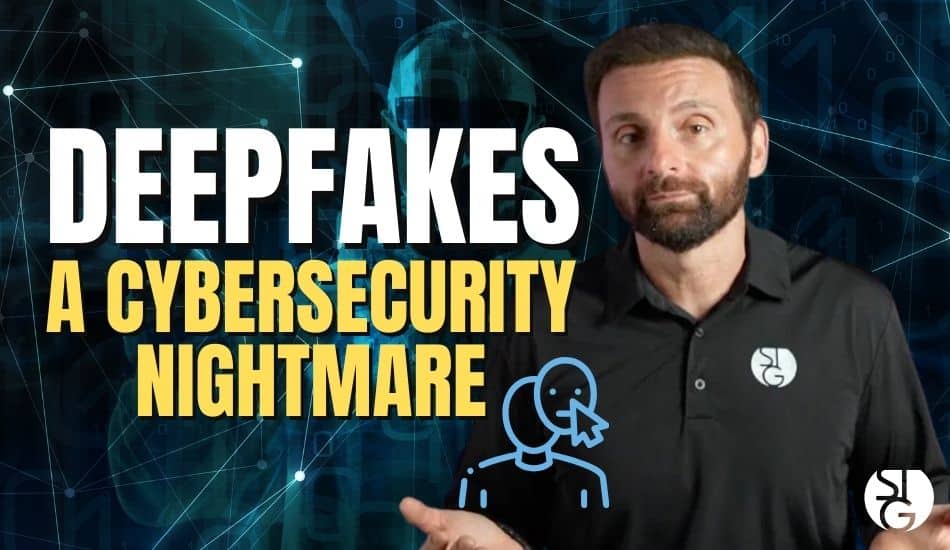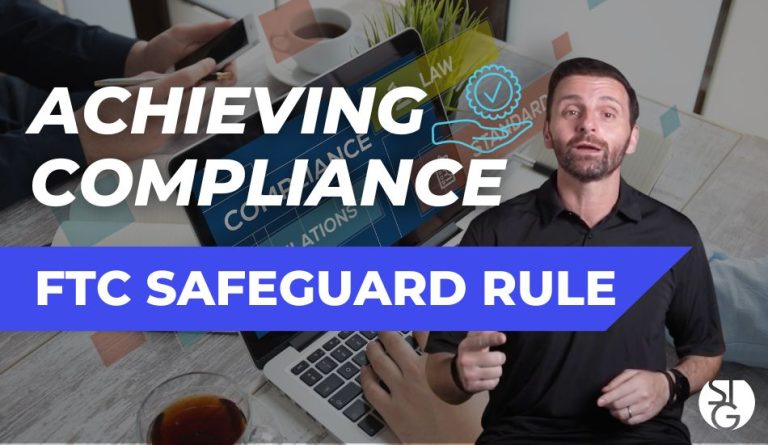That was your boss who just messaged you to send over your cellphone number, click that link, and buy 4 gift cards for clients…. right? If this has ever happened to you, it might mean bad news.
In this blog post, we’re talking about an emerging cybersecurity nightmare that cannot be ignored any longer – deepfakes.
Join us as we unpack why deepfakes are a cybersecurity nightmare for IT security. Learn why they are growing as an effective threat and how to protect your business from falling victim to this malicious scheme.
The Rise of the Deepfake Dilemma
Deepfakes, in simple terms, are AI-generated replicas of a person’s likeness with the potential to wreak havoc on various aspects of our lives. Specifically to commit identity theft and spread misinformation.
According to a recent prediction from Gartner analysts, deepfakes could destroy confidence in face biometric authentication solutions (think face ID) for approximately 30% of organizations by 2026.
There is a growing concern surrounding the ability of current authentication systems to differentiate between genuine and fake identities.
Many existing solutions rely on Presentation Attack Detection or PAD to verify the “liveliness” of a user. But attackers are ramping up on how they follow through with deepfake attacks, posing a greater challenge for traditional preventative security measures.
How Deepfakes Threatens Your IT Security
The implications of deepfake technology extend beyond the corporate setting. Individuals are also at risk of falling victim to these malicious actors and activities.
These actors are using deepfakes to steal personal identities to perpetrate fraud, even for those who are not actively engaging with AI platforms.
Social media in particular is a breeding ground for deepfake creators to source data like photos and videos, to manipulate them into creating convincing yet false personas.
This means someone can steal your identity from your profile and use it to commit fraud elsewhere, leaving you to clean up the mess.
Strategies to Defend Against Deepfake Attacks
The question is this, how can you or your business protect yourself from the threat of deepfakes?
Proceed With Caution
One strategy that works for both individuals and businesses is to always exercise caution when sharing personal information online.
Limit the amount of data available about yourself, especially high-quality photos and videos. Doing so reduces the risk of becoming a target for deepfake attacks.
It’s time to start leveraging those strong privacy settings on social media platforms and websites. They can help control who has access to personal information, and minimize the resources available to potential deepfake creators.
Staying Informed and Up-to-Date
Staying informed about the latest AI developments and deepfake technologies is how you will be able to recognize potential red flags when encountering suspicious content.
Implementing multi-factor authentication (MFA) on all available accounts will add an extra layer of security to those accounts while keeping devices and software up to date with the latest security patches will mitigate vulnerabilities that hackers can exploit.
Never Click an Unknown Link
Vigilance is key when it comes to digital communications. With human error still being the number one cause of data breaches for small businesses, it’s important to educate yourself and your staff on the importance of digital safety.
Phishing scams will often serve as the entry point for deepfake attacks.
Be cautious when receiving emails, direct messages, or other digital communications from unknown sources. Avoid clicking on suspicious links and always verify the identity of a sender are two great habits that will help prevent you from falling victim to a phishing (and deepfake) attack.
How to Respond to a Deepfake Attack
What should you do if you see a deepfake of yourself online?!
If you encounter deepfake content involving yourself or others, it’s time to act fast.
Your first step is to report the content to the hosting platform. Then federal law enforcement can aid in the removal or investigation of the incident, limiting its potential reach and impact.
It is also good to seek legal advice from cybersecurity and data privacy experts if you fall victim to a deepfake attack. The law is constantly evolving to address this threat.
Deepfakes represent quite the cybersecurity challenge in our world.
By adopting proactive measures such as sharing with care, enabling strong privacy settings, and staying vigilant against phishing scams, individuals and businesses can mitigate the risks associated with deepfake technology.
Deepfakes are a cybersecurity nightmare for IT security, but it should not stop you from protecting yourself and your business.
Together, we can navigate the digital landscape safely and securely, safeguarding our identities and preserving trust in our online interactions.
Check out our last video! ➡️ Small Businesses Become More Productive with ChatGPT
Don’t let new technology hold your business back. If you have a Los Angeles business, reach out to us at stginfotech.com or schedule a call via the calendar link below to learn more about how we can help you protect against deepfakes.
STG Infotech proudly provides IT Services for Small to Medium Businesses in Greater Los Angeles. We’d love to see if we can help you too!

Let’s dive into your IT!
Schedule a free 15-minute Virtual Meeting with a Business Technology Specialist of STG Infotech and get a closer look into your IT challenges.
We will assess your current IT infrastructure and answer any questions you may have about IT Services or partnering with STG IT.




